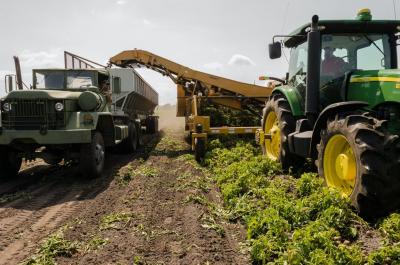Understanding the Evolution of U.S. Energy, Water, and Agriculture Interconnections
Global energy, water, and agriculture resources are increasingly strained and interlinked. As a result, events that affect resources in one sector can propagate across multiple sectors in new ways. A better understanding of these hotspots and the conditions that form them has substantial strategic planning value. Performing this assessment requires explicitly characterized interconnectivity indices that currently do not exist. This study introduces novel indices that enable the measurement of sector interconnectivity in time and space. Researchers applied this methodology to explore the implications of human and Earth system changes on U.S. energy-water-agricultural interconnectivity. Results highlight regions of high interconnectivity where future coordinated, multisector resource co-management would give insights into cross-sectoral impacts that may be missed using a sector-specific analysis.
Energy-water-agriculture interconnectivity can result in both challenges and opportunities. For example, regions that will experience strong interconnectivity in the future will require co-management of shared resources to optimize performance across systems. This work demonstrates a meaningful assessment of the evolution of interconnectivity at multiple spatial scales. This methodology will allow planners to better understand where, when, and how sector interconnections will evolve. Applications of this approach can provide insight into which regions can capitalize most on coordinated multi-sector planning efforts. This ultimately leads to more efficient and resilient systems capable of handling increased stress across sectors. The developed methodology has potential applications in diverse geographic and sectoral contexts.
This study uses the U.S. as an example to explore how interconnectivity evolves over space and time under a range of influences. Researchers employed concepts from graph theory and input-output analysis to visualize and quantify key intersectoral linkages through two new indices: the “Interconnectivity Magnitude Index” and the “Interconnectivity Spread Index.” They conducted analysis at both national- and state-level scales from 2015 to 2100. The results of a reference scenario show that water use amongst different sectors drives resource interconnectivity in the U.S. Decoupling the water and electricity systems propels changes in interconnectivity, as power plants become more water-efficient over time. A high population and high GDP growth scenario result in increased sector decoupling, as a larger share of water and energy get used outside of the interconnected sector feedback loops. A lower socioeconomic growth scenario results in the opposite trend. Transitioning to a low-carbon economy increases interconnectivity due to the expansion of purpose-grown biomass, which strengthens connections between water and energy. The results highlight that while some regions may experience similar individual sectoral stress projections, the composition of the intersectoral connectivity leading to the sectoral stress may require distinctly different multi-sector co-management strategies.

